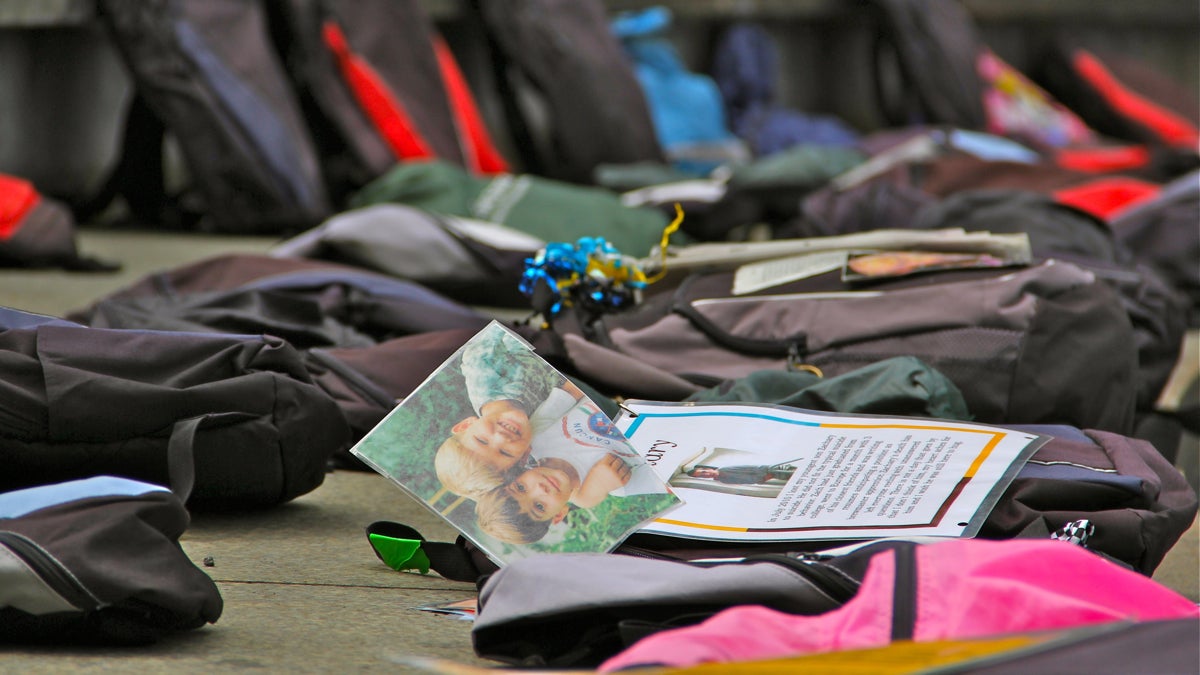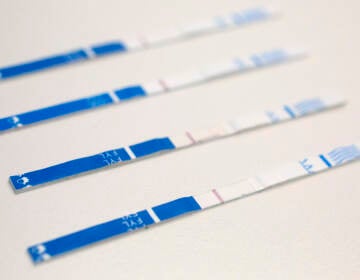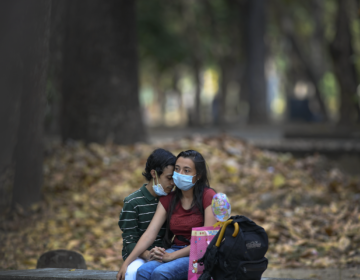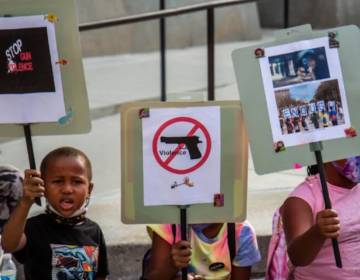New suicide prevention guidelines include survivors’ voices

The Send Suicide Packing exhibit included more than 1,000 backpacks decorated with photographs, personal possessions, and memorial messages of suicide victims and their families. (NewsWorks file photo)
The National Action Alliance for Suicide Prevention has just published a new road map for preventing suicides. It draws heavily on the voices of those who have survived trying to take their own lives. This is a novel approach in a field that has long relied solely on researchers. “Let’s bring both the research and practice together, and let it be informed by what people are experiencing that is working for them, that is working against them,” said Eduardo Vega, who co-chaired the Suicide Attempt Survivors Task Force that helped write the new prevention guidelines.
Vega brought his own experience and struggles to this task force. He remembers a day when he was sitting in his house with a gun. “I was thinking, what’s more dignified, isn’t it more dignified choice for me to kill myself now than to become a mental patient?”
Vega says stigma around mental illness runs deep, and the treatment experiences of people in crisis often cause more trauma and shame. For example, says Vega — the report suggests how to help suicidal people more effectively when they are picked up for treatment. “Not in a police car, not in an ambulance, but with a supportive hand, take me to a place like a respite care facility.”
Vega says most people who commit suicide have attempted it before — so reaching people during a moment of crisis, and setting them up with ongoing support is especially important.
Delaware mental health advocate Christa Scalies applauds the new guidelines as a way to finally give survivors a “seat at the table.” Scalies has struggled with depression, and is the founder of “Giggle On” an organization that focuses on stress reduction and mental health advocacy.
Scalies lost a friend to suicide in 2005, during a time when she was also depressed, and calls the tragic event a major wake-up call.
“I was in the mindset thinking to myself that the world would be better off without me, then my friend took his life, and it helped transform me because I saw what happened after someone takes their life.” Scalies recalls going through her friend’s address book, and calling everybody to tell them what had happened.
Scalies says the new prevention guidelines are a way to ask questions of the people who have had these kinds of life experiences, to come up with plans and outreach to save lives.
“If someone looks at me and says ‘I don’t understand how someone could be suicidal,’ well, I do, because I have been there.”
WHYY is your source for fact-based, in-depth journalism and information. As a nonprofit organization, we rely on financial support from readers like you. Please give today.





